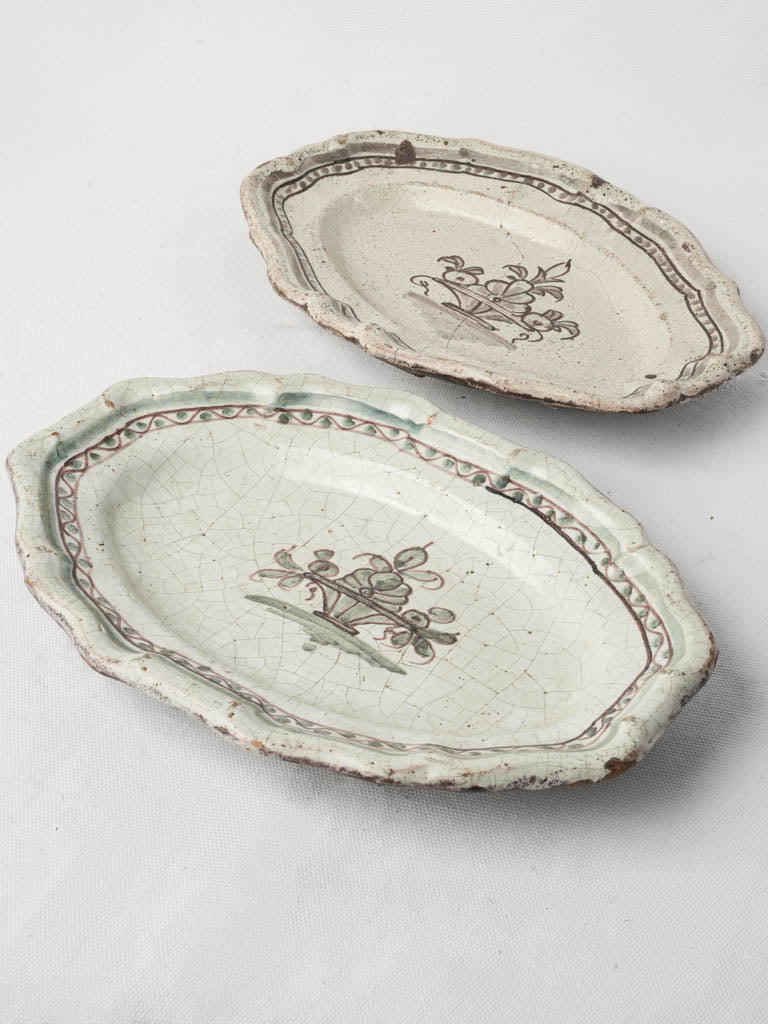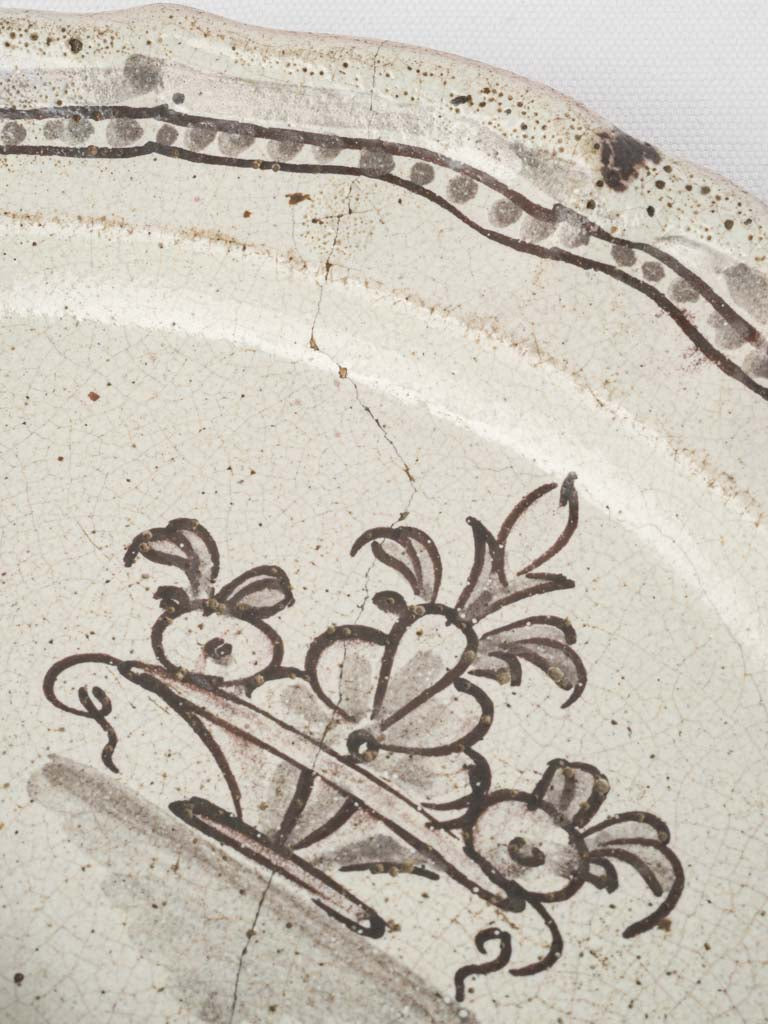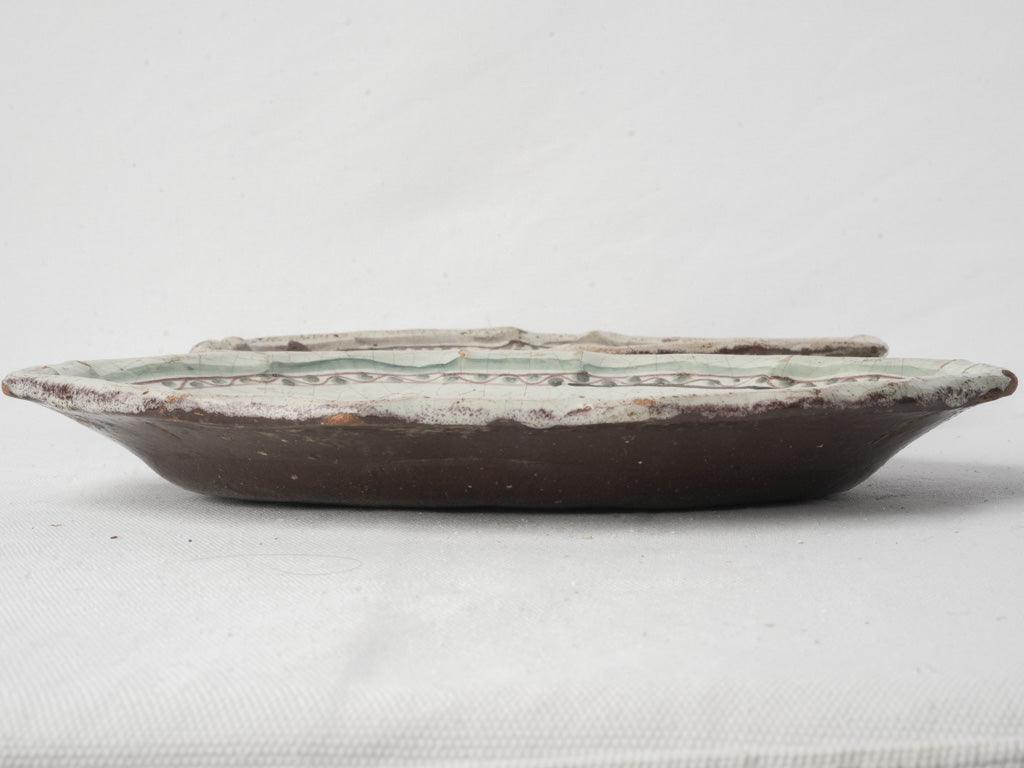












Pair of 19th-Century Petite Oval French “Cul Noir” Faïence Dishes - 11¾"
All inclusive pricing to USA
The price includes duties, taxes, tariffs and shipping. No more to pay for destinations within the US.
Pair of petite oval French faïence dishes from the 19th century with scalloped, molded rims, each hand-painted with a basket of fruit framed by a looped ribbon border. One is executed in manganese-brown monochrome, the other unusually accented with soft green. The reverses are finished en cul noir, the characteristic dark manganese glaze typical of northern French productions. Surfaces show pronounced craquelure and kiln speckling; rims with small chips and wear. One dish retains an old staple repair to a crack, adding to its rustic charm, while the other has a visible stabilized hairline.
The cul noir tradition emerged in northern France during the 18th and 19th centuries, particularly around Nevers, Sinceny, and Rouen. Artisans applied a deep brown or black manganese glaze to the reverse of faïence pieces, both for protection during firing and as a distinctive stylistic touch. This practice created a striking contrast between the dark back and the bright, tin-glazed front, now highly prized by collectors of regional pottery.
These shallow dishes read beautifully on a plate rack or kitchen wall, their muted palette complementing stone, limewash, and weathered wood. On the table, they are ideal for hors d’oeuvres, fruit, or cheeses, lending a gentle, timeworn note to an informal buffet. They also work well as catchalls on a console or pantry shelf, layered with other provincial faïence for an authentic French country vignette.
Condition and patina consistent with age.
Each measures approx. 1½" high x 11¾" long x 8" wide
Each measures approx. 4cm high x 30cm long x 20cm wide
Choose options

